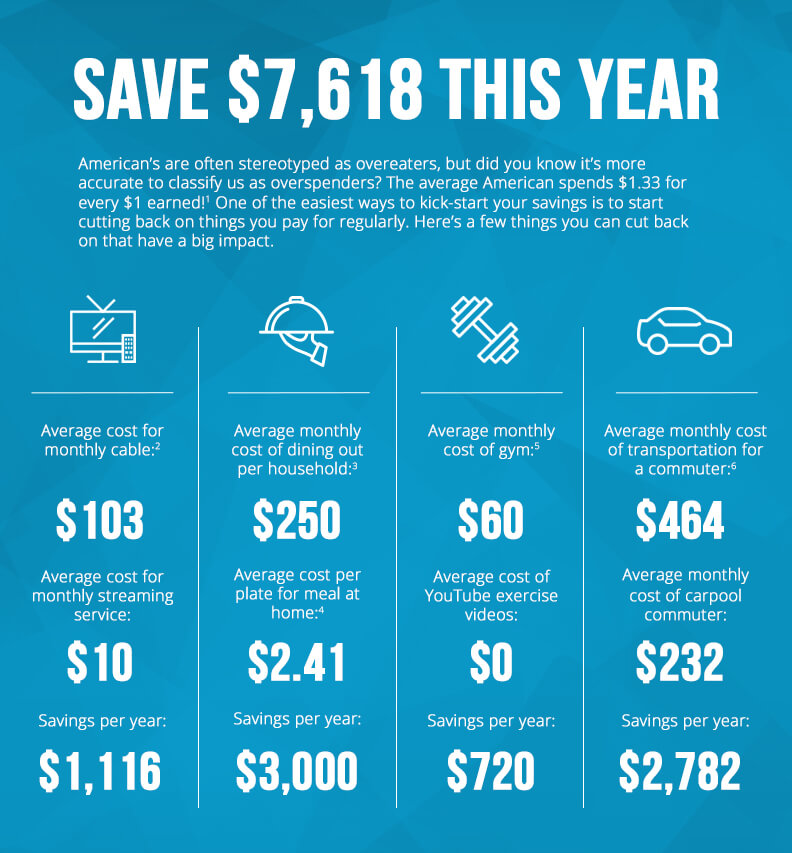Saving money doesn’t have to be hard. Small changes can make a big difference.
Everyone wants to save money, but it can seem overwhelming at times. The good news is, there are many simple ways to cut costs and boost your savings. You don’t need to make huge sacrifices or overhaul your lifestyle. By making a few minor adjustments to your daily habits, you can find yourself with extra cash at the end of the month.
Whether it’s cutting back on unnecessary expenses or finding more affordable alternatives, these easy tips can help you save money without feeling deprived. Let’s explore some easy ways to save money and stress less.
Table of Contents
Budgeting Basics
Understanding the basics of budgeting is crucial for saving money. A solid budget helps you manage your finances better. It reduces stress and keeps you on track. Let’s dive into some fundamental steps.
Track Your Expenses
Start by tracking all your expenses. Note down every dollar you spend. Use a notebook, spreadsheet, or app. This will help you see where your money goes. Identify patterns in your spending.
Tracking expenses can reveal unnecessary costs. You may find you spend too much on coffee or dining out. Small changes can lead to big savings. Stay consistent with this habit.
Set Financial Goals
Setting financial goals is key to a successful budget. Decide what you want to achieve. It could be saving for a trip or paying off debt. Goals give you a clear purpose.
Write down your goals. Make them specific and realistic. Break big goals into smaller steps. This makes them easier to achieve. Celebrate each milestone you reach. This keeps you motivated.

Credit: momgenerations.com
Smart Shopping
Smart shopping is an effective way to save money. Small changes can lead to big savings. Understanding how to shop smartly can help you stay within budget. Here are some easy ways to save while shopping.
Use Coupons And Discounts
Coupons and discounts are simple tools to save money. Many stores offer digital coupons. Websites like RetailMeNot and Honey can help find deals. Check your local grocery store’s app for discounts. These small savings add up over time.
Sign up for newsletters from your favorite stores. They often send exclusive discounts. Keep an eye out for seasonal sales. Black Friday and Cyber Monday offer big discounts. Use these sales to buy items at lower prices.
Buy In Bulk
Buying in bulk can save you money in the long run. Stores like Costco and Sam’s Club offer bulk items at lower prices. Stock up on non-perishable goods. Items like toilet paper, canned goods, and cleaning supplies are great for bulk buying.
Be careful with perishable items. Only buy what you can use before it goes bad. Check unit prices to ensure you get the best deal. Sometimes, bulk items are not always cheaper. Compare prices before you buy.
Reduce Utility Bills
Reducing your utility bills can make a big difference in your budget. With a few simple changes, you can save money every month. Let’s explore some easy ways to cut down on your energy and water consumption.
Energy-saving Tips
Lowering your energy usage is one of the quickest ways to reduce your utility bills. Here are some practical tips:
- Unplug devices: Unplug electronics when not in use to avoid phantom energy drain.
- Use LED bulbs: Switch to LED light bulbs to save on electricity.
- Adjust thermostat: Set your thermostat a few degrees lower in winter and higher in summer.
- Seal leaks: Seal windows and doors to prevent drafts and maintain temperature.
- Energy-efficient appliances: Invest in energy-efficient appliances to save in the long run.
Water Conservation
Conserving water not only helps the environment but also reduces your water bills. Consider these tips to save water:
- Fix leaks: Repair leaky faucets and toilets to avoid water waste.
- Shorter showers: Take shorter showers to reduce water usage.
- Use a dishwasher: Use a dishwasher instead of hand-washing dishes to save water.
- Water-efficient fixtures: Install low-flow showerheads and faucets.
- Water lawns wisely: Water your lawn early in the morning or late in the evening to minimize evaporation.

Credit: www.panelplace.com
Cutting Subscription Costs
Cutting subscription costs can save you a lot of money each month. Many people sign up for services they rarely use. These small charges add up quickly. Let’s explore two simple ways to reduce these costs. By reviewing and canceling unused services and finding cheaper alternatives, you can keep more money in your wallet.
Review And Cancel Unused Services
First, make a list of all your subscriptions. Include streaming services, apps, magazines, and memberships. Next, check which ones you use regularly. If you haven’t used a service in the past month, cancel it. Many subscriptions renew automatically. You may not notice these charges. Canceling them stops the charges and saves you money.
Find Cheaper Alternatives
Sometimes, you need a service but don’t want to pay the high cost. Look for cheaper alternatives. For example, switch from a premium streaming service to a free one. Use a library card to access magazines and books for free. Many apps have free versions with basic features. These small changes can lead to big savings.
Diy Solutions
Saving money doesn’t have to be hard. DIY solutions can help you cut costs and be creative. Whether it’s fixing things at home or making your own cleaning products, you can save a lot. Here are some easy DIY solutions to get you started.
Home Repairs
Many home repairs don’t need a professional. You can do them yourself with a few tools. Fixing a leaky faucet is a common task. A wrench and new washer can solve it. Painting a room is another easy job. You only need paint, brushes, and tape.
For bigger repairs, use online tutorials. Websites like YouTube offer step-by-step guides. Fixing a broken tile or repairing drywall becomes simple with these resources. You can save hundreds of dollars this way.
| Repair | Tools Needed | Estimated Savings |
|---|---|---|
| Leaky Faucet | Wrench, Washer | $50-$100 |
| Room Painting | Paint, Brushes, Tape | $200-$400 |
| Broken Tile | Tile, Adhesive, Grout | $150-$300 |
Homemade Cleaning Products
Store-bought cleaning products can be expensive. Making your own is cheaper and healthier. You need basic items like vinegar, baking soda, and essential oils. These ingredients clean well without harsh chemicals.
Here are some simple recipes:
- All-Purpose Cleaner: Mix equal parts vinegar and water. Add a few drops of essential oil for scent.
- Glass Cleaner: Mix 2 cups of water, 1/2 cup of vinegar, and 1/4 cup of rubbing alcohol.
- Bathroom Scrub: Combine baking soda and water to make a paste. Scrub surfaces and rinse.
These homemade solutions are effective and cost pennies to make. You save money and reduce your exposure to harmful chemicals.
| Product | Ingredients | Estimated Cost |
|---|---|---|
| All-Purpose Cleaner | Vinegar, Water, Essential Oil | $1 |
| Glass Cleaner | Water, Vinegar, Rubbing Alcohol | $1.50 |
| Bathroom Scrub | Baking Soda, Water | $0.50 |
Eating Out Less
Eating out can be convenient, but it drains your wallet quickly. Reducing your dining out habits can lead to significant savings. Discover how meal planning and cooking at home can help you save money without sacrificing taste or convenience.
Meal Planning
Meal planning is a simple strategy to save money on food. By planning your meals in advance, you avoid unnecessary purchases and waste. Here’s how you can start:
- Make a weekly meal plan.
- Check your pantry and fridge before shopping.
- Write a shopping list and stick to it.
With a meal plan, you buy only what you need. This minimizes impulse buys and reduces food waste. Plus, you’ll know exactly what to cook each day, saving time and stress.
Cook At Home
Cooking at home is one of the best ways to save money. Home-cooked meals are cheaper and healthier. Here are some tips to make cooking at home easier:
- Start with simple recipes.
- Prep ingredients in advance.
- Cook in batches and freeze leftovers.
Begin with basic recipes and gradually try new dishes. Preparing ingredients ahead of time makes cooking faster and less overwhelming. Batch cooking and freezing leftovers ensure you always have a meal ready, reducing the temptation to eat out.
Below is a simple comparison of the cost of eating out versus cooking at home:
| Meal Type | Eating Out (per meal) | Cooking at Home (per meal) |
|---|---|---|
| Breakfast | $8 | $2 |
| Lunch | $12 | $4 |
| Dinner | $20 | $6 |
As you can see, cooking at home can lead to significant savings. Over a week, the cost difference adds up, giving you more money for other essentials.
Transportation Savings
Transportation costs can take a big chunk out of your budget. By making smart choices, you can save money on your daily commute and travel. Here are some simple ways to cut transportation expenses.
Carpooling
Carpooling is a great way to save on gas and reduce wear on your car. Share rides with coworkers or friends who live nearby. Split the fuel costs and take turns driving. You will save money and help the environment by reducing emissions.
Use carpooling apps to find others looking to share rides. Many communities have carpool groups. Join one to make new friends and save money together.
Public Transportation
Using public transportation can be much cheaper than driving. Buses, trains, and trams often have lower costs than maintaining a car. Check your city’s public transit options. Many offer discounts for students, seniors, or frequent riders.
Plan your trips using transit schedules to avoid long waits. Public transportation can also be less stressful than driving, giving you time to read or relax. Invest in a monthly pass for even greater savings. You will save money and reduce your carbon footprint.
Investing In Savings
Investing in savings is a smart way to secure your future. It can help you grow your wealth over time. By making small changes, you can see big results. Let’s explore some easy ways to invest in savings.
High-interest Savings Accounts
High-interest savings accounts offer better returns than regular accounts. They help your money grow faster. Look for accounts with competitive interest rates. Compare different banks and their offers.
Many banks provide online tools for easy management. You can track your savings and interest earned. This way, you stay informed about your progress.
Here is a table of some popular high-interest savings accounts:
| Bank Name | Interest Rate | Minimum Balance |
|---|---|---|
| Bank A | 1.5% | $1000 |
| Bank B | 1.75% | $500 |
| Bank C | 2.0% | $2000 |
Automate Savings
Automating your savings ensures consistent contributions. Set up automatic transfers from your checking to your savings account. This way, you save without even thinking about it.
Many banks and apps offer this feature. You can choose the frequency and amount. For example, transfer $50 every week. Over time, these small amounts add up.
Here are some benefits of automating your savings:
- Consistency in saving
- Reduced temptation to spend
- Less effort and time needed
By automating your savings, you create a habit. It helps you stay on track with your financial goals.

Credit: www.cashnetusa.com
Frequently Asked Questions
How Can I Save Money Daily?
Start by tracking your expenses and creating a budget. Cut down on non-essential purchases. Use coupons and shop during sales.
What Are Simple Ways To Save Money?
Cook at home instead of eating out. Cancel unused subscriptions. Use public transportation or carpool.
How Can I Save Money On Groceries?
Plan meals ahead of time and make a shopping list. Buy in bulk and choose store brands.
How Can I Save Money On Utilities?
Turn off lights when not in use. Use energy-efficient appliances. Set your thermostat to an optimal temperature.
Conclusion
Saving money doesn’t have to be hard. Start with small changes. Track your spending. Plan your meals. Use coupons and discounts. Avoid impulse buys. Set clear goals. Stick to a budget. Every little bit helps. Stay patient. Celebrate your progress.
These simple tips can make a big difference. Saving money is about being mindful. You can do it!



